TRIDAX
Tridax
L., Sp. Pl. 2: 900. 1753; Fl. China @ eFloras.org 20-21: 864; Strother Fl. North Amer. @ eFloras.org 21: 179.
Herbs, annual or perennial, 10-40(-80) cm; stem procumbent to ascending. Leaves basal and cauline, opposite, petiolate or sessile; blade deltate, lanceolate, lanceolate-ovate or ovate, often pinnately or palmately lobed, both surfaces glabrate, hirsute, scaberulose or strigillose, ultimate margins coarsely toothed or subentire. Synflorescence of solitary capitula or cymose. Capitula radiate or discoid; involucres cylindric to hemispheric, 4-8 mm in diameter; phyllaries persistent, in 2-3+ series, outer usually shorter, more herbaceous, innermost scarious. Receptacle convex to conical, paleate; paleae persistent, lanceolate-linear, scarious, weakly conduplicate, often apically toothed. Ray florets: (0-)3-8(-13), female, fertile. Corolla pale yellow, white or purplish. Disc florets: (20-) 40-80+, bisexual, fertile. Corollas yellowish, whitish or purplish; tubes shorter than cylindric or funnelform throats, lobes 5, usually deltate (sometimes rays 0 and corolla of marginal florets bilabiate). Cypselae obconical to obpyramidal, 3-5-angled, densely pilose- sericeous, glabrous or villous. Pappus (10-)20(-40), sometimes absent in ray florets, persistent, of plumose or ciliate, setiform scales or bristles, rarely absent.
34 species
Tridax procumbens
Tridax procumbens
L., Sp. Pl. 2: 900. 1753; Hook. f., Fl. Brit. Ind. 3: 311 1882; Sharma & Kachroo, Fl. Jammu (Illustr.) 2: t. 136. 1983; Kaur & Sharma, Fl. Sirmaur 398. 2004; Singh & Sharma, Fl. Chamba Dist. 437. 2006; Fl. China @ eFloras.org 20-21: 864; Fl. North Amer. @ eFloras.org 21: 180.
Herbs, annual or perennial, caulescent, decumbent. Stem procumbent, branched at base, branches slender, spreading or ascending, 20-80 cm, hispid. Leaves few, opposite, 2-7.5 cm x 0.8-3.5 cm, ovate or lanceolate, acute or subacuminate, leaf base cuneate, margin irregularly sharply or coarsely dentate or serrate, pinnatisect, segments few, narrow, apex acute or acuminate, hairy with bulb-based hairs; petiole 0.5- 1.8 cm long. Capitula radiate, solitary, 1-1.5 cm x 1-1.5 cm. Peduncle erect, ribbed, pilose, 8-30 cm long. Involucre subcampanulate, 6-7 mm; phyllaries 2-seriate: outer 5.5-6 mm long, ovate-lanceolate, acuminate, densely hispid, herbaceous; inner +/- 7 mm long, lanceolate, acute, scarious, thinly hairy, light purplish. Receptacle paleate, paleae 8-9 mm long, scarious. Ray florets: 5-6, +/-9 mm long, female, fertile. Corolla creamish-white; tube short, ca. 3 mm long, hairy; limb +/-4 mm x ca. 3 mm, apex usually 3-lobed, sometimes 2 or 4-lobed, lobes hairy at apex. Disc florets: Many, 50+, +/-10 mm long, bisexual, fertile. Corolla 7-8 mm long, tubular, 5-lobed, lobes hairy. Cypselae blackish- brown, ca. 2 mm long, oblong, 3-5-angled, truncate at apex, silky pubescent. Pappus unequal, shiny, plumose; of ray florets 2-2.2 mm long and less in number; of disc florets 4-6 mm long, 15-20.
Common Names: Coat Buttons, Tridax Daisy, Mexican Daisy
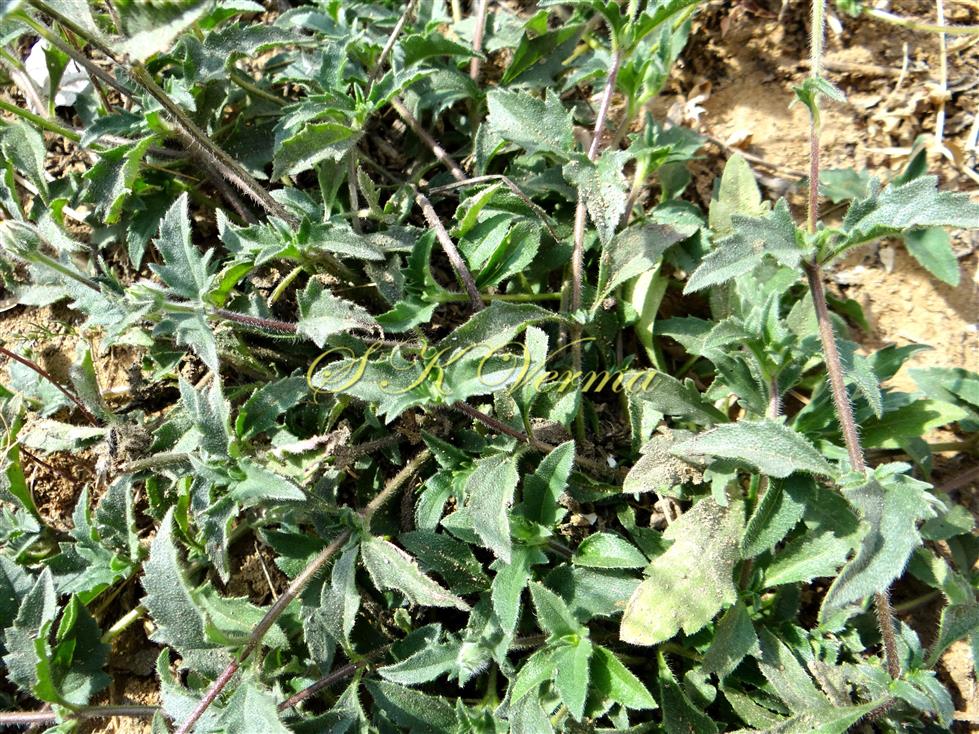
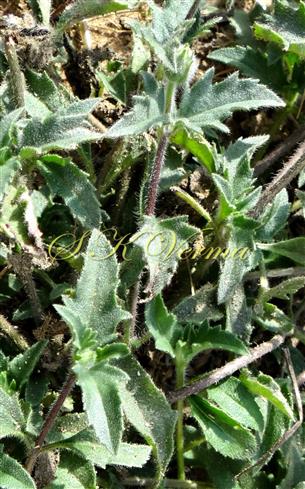
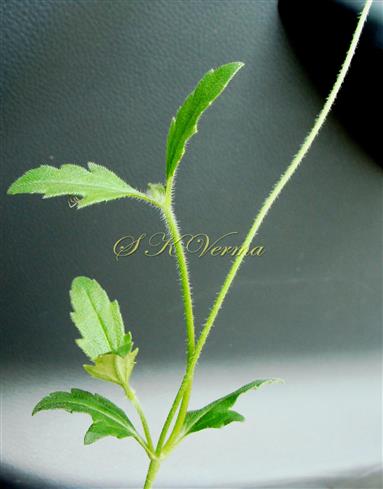
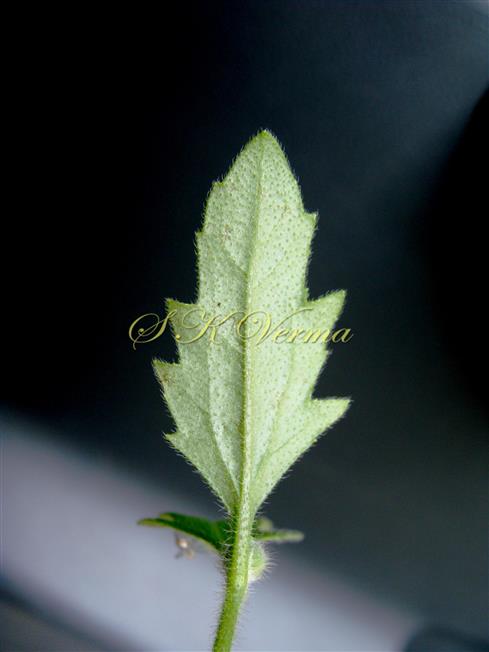
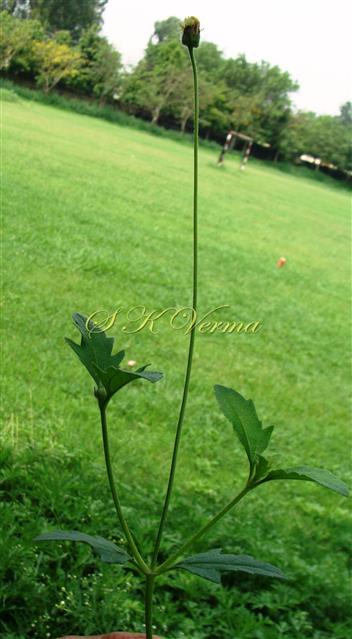
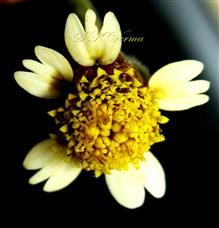
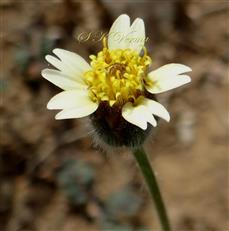
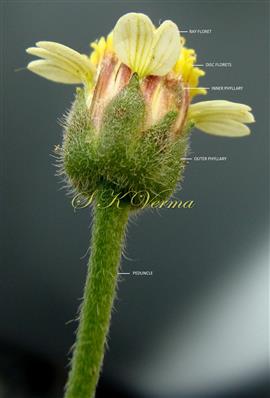
 -DSC09517.jpg)
-DSC09511.jpg)
-DSC09509.jpg)
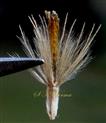

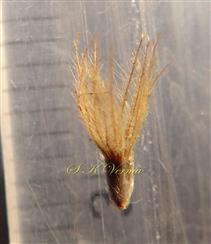









 -DSC09517.jpg)
-DSC09511.jpg)
-DSC09509.jpg)


